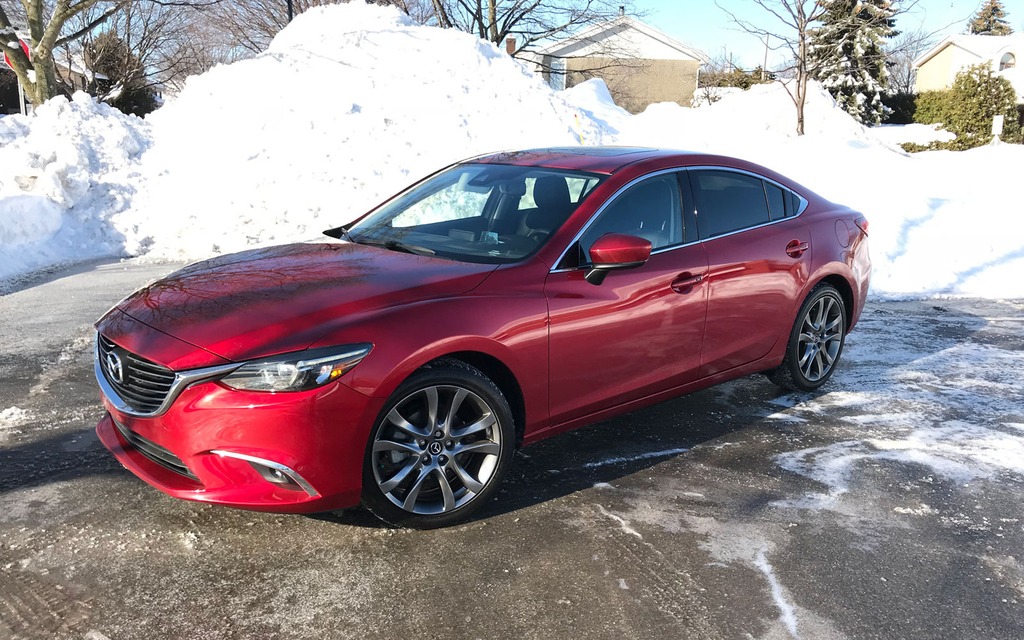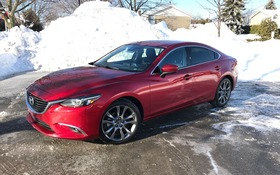2017 Mazda6: Are Sedans a Dying Breed?

| Strong points |
|
|---|---|
| Weak points |
|
Canadians are buying fewer sedans and more SUVs and crossovers. When they do buy sedans, they choose compact cars like the Honda Civic, Toyota Corolla or Mazda3. The best-selling midsize sedan in 2017 was the Toyota Camry which sold 14,574 units (a 7.1% drop) and didn’t even crack the top 30 in vehicle sales. The Honda Accord, Ford Fusion and Chevrolet Malibu all had declines in 2017, but the anomaly is the Mazda6 which sold 2514 units—a 23.8% increase compared to 2016.
That trend might continue because Mazda unveiled a slightly reworked 2018 Mazda6 at the Los Angeles Auto Show last November, which includes a new 2.5-litre turbo engine that produces 250 horsepower and 310 lb.-ft. of torque.
- Also: 2018 Mazda6: Pricing and Details Announced
- Also: Midsize Sedan Comparison Test: Camry, Sonata, Accord and Mazda6
For now, there are still a bunch of 2017 models populating dealer lots and I had a chance to drive one for a week. The test vehicle is a vibrant metallic red Mazda6 GT with a manual—yes, manual—transmission. Powering this sedan is a 2.5-litre four-cylinder engine making just 184 horsepower and 185 lb.-ft. of torque. The manual gearbox helps get every last ounce of juice from the engine, but it’s still very underwhelming in terms of power and quite loud. Other than the lack of muscle, the Mazda6 is quite capable and holds the road firmly and confidently. My city-only driving yielded upwards of 11 L/100km, which is high.
Perhaps one of the reasons why the Mazda6 feels quite solid is a new technology which Mazda calls G-Vectoring Control. According to Mazda, “G-Vectoring Control (GVC) comes standard at no extra cost to the customer. The all-new, Mazda-exclusive, technology uses engine timing to control chassis dynamics, leading to smoother, more accurate steering inputs.”
To help with the cornering posture, the engine will de-throttle ever so slightly so as to transfer weight to the front wheels. GVC monitors speed, throttle position and steering wheel rotation to make these minute adjustments within 50 milliseconds. The deceleration is unperceivable to humans, but will result in a slightly better steering feel which we can notice. Good on Mazda engineers for delivering the best ride possible.
The interior is where this sedan really shines. Mazda has created a modern enclave which serves to provide a luxury vehicle experience from a non-luxury brand. Granted, this test vehicle is a high-end trim complete with almost all the bells and whistles, but much of the materials will still be found on lower-end versions. The design of the dash is both pretty and functional.
The infotainment system is really something spectacular. Mazda Connect’s menus are intuitive, easy to learn and nice to look at, something many manufacturers seem to struggle with. Not only that, but the controls with their brushed aluminum finish are what I’d expect to find in a BMW. My favourite part is the location of the volume knob which is where the handbrake would otherwise sit. It just feels so natural and it can be manipulated without ever taking your eyes off the road. The dial to control the menus is also located there.
The one thing missing is Apple CarPlay and Android Auto integration.
Looks-wise, it’ll be a matter of personal preference as to whether the Mazda6 is nicer than the Accord or Camry (both of which are striking in my humble opinion). I find the 6 a little tamer than the competition, but still very pretty. As I mentioned earlier, the 2018 model receives a slight refresh, but the untrained eye might not even notice, so don’t worry about buying a 2017 because it’ll still look new for several years.











